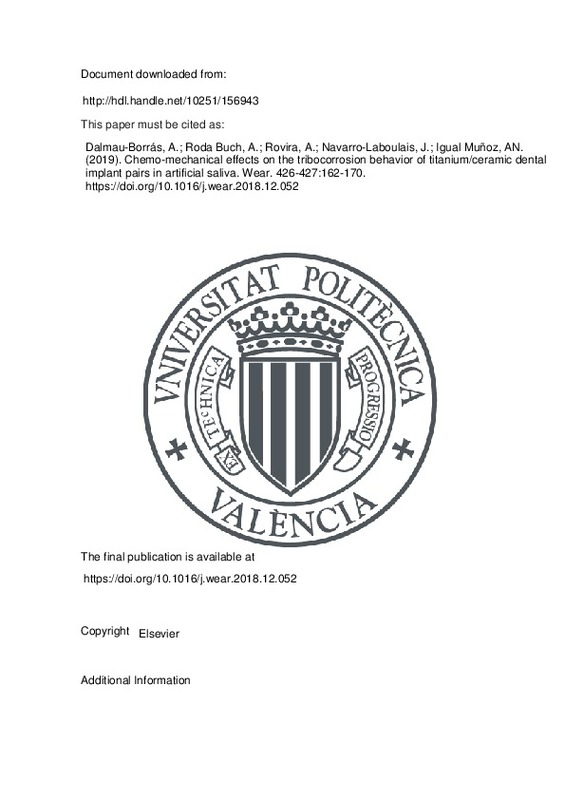JavaScript is disabled for your browser. Some features of this site may not work without it.
Buscar en RiuNet
Listar
Mi cuenta
Estadísticas
Ayuda RiuNet
Admin. UPV
Chemo-mechanical effects on the tribocorrosion behavior of titanium/ceramic dental implant pairs in artificial saliva
Mostrar el registro completo del ítem
Dalmau-Borrás, A.; Roda Buch, A.; Rovira, A.; Navarro-Laboulais, J.; Igual Muñoz, AN. (2019). Chemo-mechanical effects on the tribocorrosion behavior of titanium/ceramic dental implant pairs in artificial saliva. Wear. 426-427:162-170. https://doi.org/10.1016/j.wear.2018.12.052
Por favor, use este identificador para citar o enlazar este ítem: http://hdl.handle.net/10251/156943
Ficheros en el ítem
Metadatos del ítem
| Título: | Chemo-mechanical effects on the tribocorrosion behavior of titanium/ceramic dental implant pairs in artificial saliva | |
| Autor: | Roda Buch, Alejandro Igual Muñoz, Anna Neus | |
| Entidad UPV: |
|
|
| Fecha difusión: |
|
|
| Resumen: |
[EN] In this paper, the degradation mechanisms of the ceramic and the metal in Titanium/Zirconia pairs for biomedical applications were analyzed. To do that, an experimental set-up with well-controlled mechanical and ...[+]
|
|
| Palabras clave: |
|
|
| Derechos de uso: | Reconocimiento - No comercial - Sin obra derivada (by-nc-nd) | |
| Fuente: |
|
|
| DOI: |
|
|
| Editorial: |
|
|
| Versión del editor: | https://doi.org/10.1016/j.wear.2018.12.052 | |
| Título del congreso: |
|
|
| Lugar del congreso: |
|
|
| Fecha congreso: |
|
|
| Código del Proyecto: |
|
|
| Agradecimientos: |
Authors would like to acknowledge the Generalitat Valenciana for the financial support under the PROMETEO/2016/040 and GV/2017/042 projects. A. Dalmau acknowledges the Generalitat Valenciana for her contract (APOSTD/2017/051).[+]
|
|
| Tipo: |
|







![[Cerrado]](/themes/UPV/images/candado.png)


